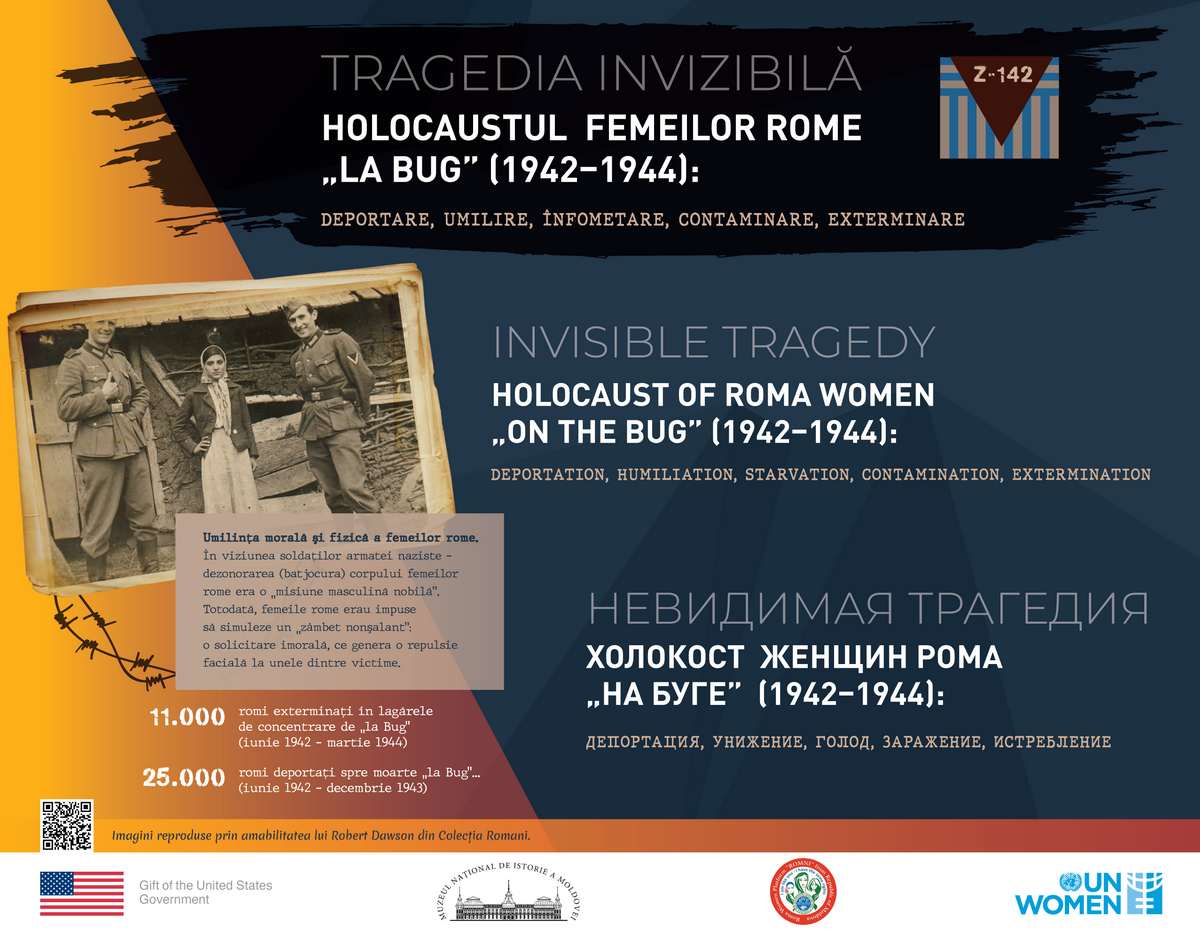 The exhibition "Invisible tragedy. Holocaust of Roma women "on the Bug" (1942-1944): deportation, humiliation, starvation, contamination, extermination" presents the photo-documentary testimonies and documents about the atrocities to which the deported and exterminated Roma women were subjected in the concentration camps located on the territory between the Dniester and Bug rivers.
The exhibition "Invisible tragedy. Holocaust of Roma women "on the Bug" (1942-1944): deportation, humiliation, starvation, contamination, extermination" presents the photo-documentary testimonies and documents about the atrocities to which the deported and exterminated Roma women were subjected in the concentration camps located on the territory between the Dniester and Bug rivers.
For the first time, the Roma Holocaust is approached from the perspective of the drama of women who were subjected to double discrimination during the Second World War. The exhibition pays tribute to all the victims of Roma ethnicity, underlining the dangers related to the war and the need to combat all forms of discrimination and manifestations of ethnic or racial hatred in relation to refugees and the inhabitants of the country.
Between 1941 and 1944, the territory between the Dniester and Bug rivers became the cemetery of over 20,000 Romanian Roma. About 2123 sedentary Roma from Bessarabia were deported and many of them exterminated in concentration camps. The victims of the Holocaust against the Roma were subjected to inhumane and cruel treatment: grueling marches, sudden evacuations "from one concentration camp to another", the "operational" killing of Roma who remained behind the columns during the marches, starvation, rape.
In 2015, the European Parliament, through a special Resolution, proclaimed August 2 as the European Day of Commemoration of the Holocaust against the Roma. On July 22, 2016, the Parliament of the Republic of Moldova voted "Declaration regarding the acceptance of the Final Report of the International Commission for the Study of the Holocaust in Romania, chaired by Elie Wiesel", and later the Government approved an Action Plan through which the Republic of Moldova fully committed itself to the community's efforts international regarding the study of the Holocaust and the commemoration of its victims: the Jews and the Roma.
The exhibition brings together photographic images, accompanied by memoirs and archival documents that reflect the period of deportations and inhumane treatment of Roma women in the period 1941-1944. The photo-documentary images were taken from private collections and public libraries, accompanied by documents and administrative directives that reveal how the operations to identify and evacuate the Roma were carried out, as well as the transportation, feeding and living conditions imposed on the Roma in the current territory of the Republic of Moldova, Romania and Ukraine.
The exhibition "Invisible tragedy. Holocaust of Roma women "on the Bug" (1942-1944): deportation, humiliation, starvation, contamination, extermination" represents a tribute to the Roma women who went through the atrocities of the Holocaust, as well as an action to condemn the war which implicitly brings inhumane, degrading and discriminatory treatment especially in relationship with women.
The exhibition will be located on the fence of the National Museum of History of Moldova and will be open to the general public until August 23, 2023. The exhibition "Invisible tragedy. Holocaust of Roma women "on the Bug" (1942-1944): deportation, humiliation, starvation, contamination, extermination" is organized by UN Women, in collaboration with the "Voice of the Roma" Coalition, the National History Museum of Moldova and the financial support of the Government of the States United.



















































